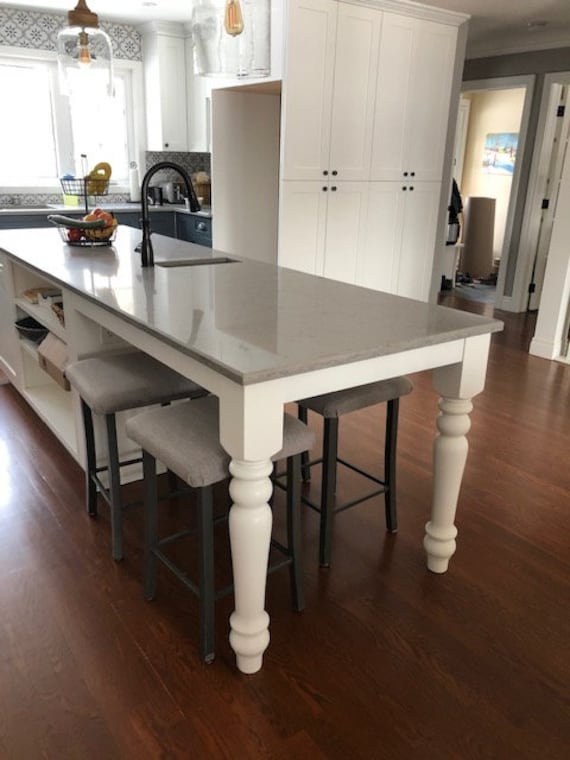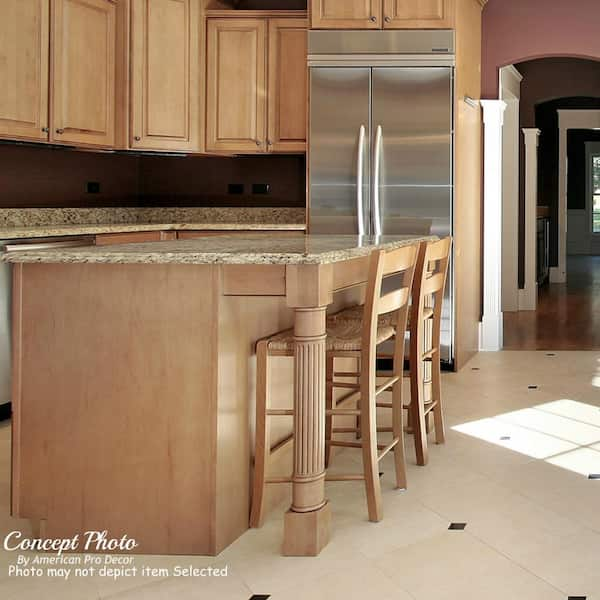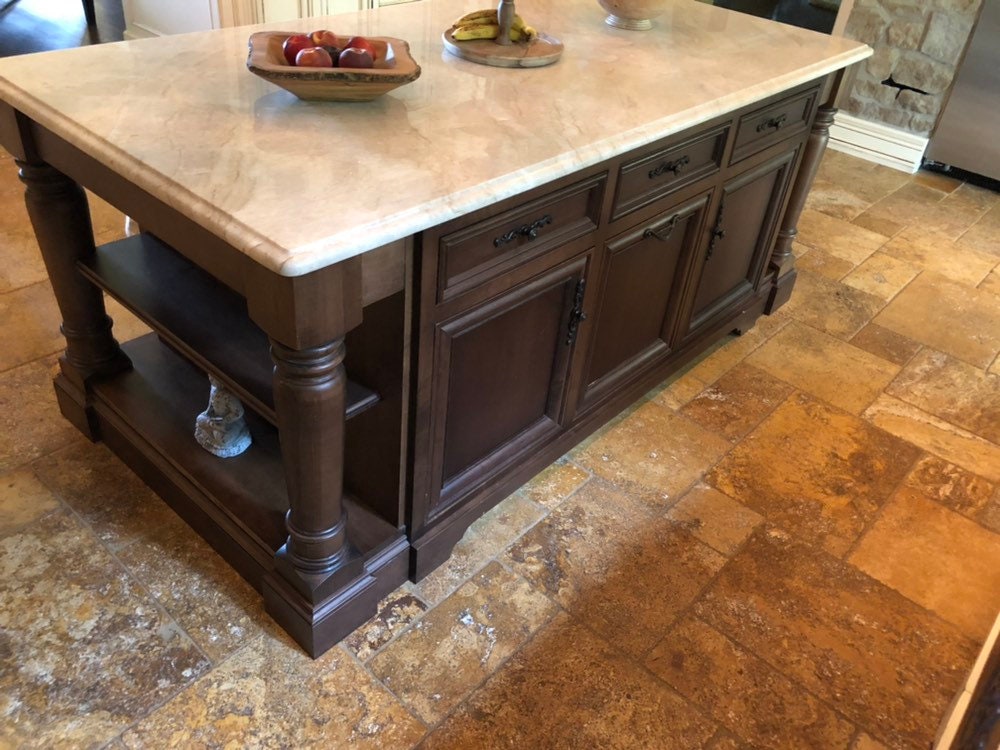Top Quality Kitchen Island Legs for a Sturdy Space Station
Top Quality Kitchen Island Legs for a Sturdy Space Station
Blog Article
An Overview to Selecting the Suitable Cooking Area Island for Your Home
Recognizing your kitchen's spatial characteristics is the first step, ensuring that the island fits perfectly without interrupting the flow. The selection of products and coatings also plays an important duty in balancing the island with your cooking area's total design.
Analyzing Your Area
Before choosing a cooking area island, it is important to completely assess your space to make sure the addition will be both practical and cosmetically pleasing. Begin by measuring the available location, consisting of the width, size, and elevation of the kitchen. Exact measurements are critical to prevent acquiring an island that bewilders the room or one that is disproportionately little.
Consider the existing design and just how the island will incorporate with the existing web traffic flow. A well-placed island needs to not hamper or block paths accessibility to crucial devices, such as the refrigerator, stove, and sink. Leave sufficient clearance area-- generally around 36 to 48 inches on all sides-- to enable comfortable activity and office efficiency.
Next, review the natural light and sightlines within your cooking area. An island that blocks a window or interrupts visual communication can make the area feel dark and confined. Assume regarding how the island's placement will certainly affect illumination and exposure, guaranteeing it enhances as opposed to diminishes the kitchen area's atmosphere.
Establishing the Purpose
Determining the objective of your kitchen area island is an important action in ensuring it meets your certain requirements and preferences. Before diving into style or size factors to consider, it is crucial to clarify what primary feature the island will serve in your kitchen. Will it be a main hub for meal preparation, a laid-back eating location, or perhaps an added storage space option?
In addition, enough counter area for slicing and blending, along with accessible storage for kitchen area tools and active ingredients, can change the island right into a reliable workstation. Conversely, if the island is planned to assist in social communications or serve as a dining location, seating setups end up being extremely important.

Picking the Right Dimension
Choosing the ideal dimension for your cooking area island is a balance of functionality and room optimization. A suitable kitchen area island need to supply ample workspace while making certain that motion around the kitchen area stays unimpeded. Begin by gauging your kitchen room; a minimum clearance of 36 to 42 inches around the island is required to permit comfy movement and ease of access.
The dimensions of the island should reflect its designated usage. If the island will certainly serve mostly as a prep area, a width of 24 to 36 inches could suffice.

Lastly, guarantee that the island's dimension complements the total kitchen format, preventing any type of frustrating presence that may diminish the cooking area's aesthetic and energy - kitchen island legs. Careful preparation and specific dimensions will certainly help you accomplish a efficient and harmonious kitchen area environment
Deciding On Materials and Finishes
After identifying the ideal dimension for your kitchen island, the following step includes selecting suitable products and coatings. The choice of products considerably influences both the visual allure and functionality of your kitchen island. Popular materials for kitchen counters consist of quartz, butcher, and granite block, each offering distinct benefits. Granite, known for its resilience and timeless sophistication, is very immune to scratches and warmth. Quartz, a crafted rock, gives a non-porous surface area that withstands spots and microorganisms. Butcher block, made from useful content wood, includes a cozy, rustic appeal and is ideal for cooking.
In addition to the countertop, take into consideration the products for the space station. Strong timber provides a classic, sturdy look, while stainless steel gives a streamlined, modern look and is very easy to clean. Repainted surfaces can present a splash of color, with choices varying from soft pastels to strong, lively colors.
When choosing coatings, ensure they match the total kitchen style. Matte surfaces provide a modern feeling, while glossy surfaces can develop a refined, high-end look. Pay interest to the resilience of coatings, specifically in high-traffic areas, to preserve the island's look with time. Selecting the right products and finishes will certainly boost both the capability and visual appeal of your kitchen island.
Incorporating Practical Features
Including practical attributes right into your kitchen area island can substantially improve its utility and ease, changing it right into a flexible centerpiece of your kitchen area. One vital feature to think about is added storage. Incorporating cabinets, drawers, and open shelving can provide much-needed room for kitchenware, utensils, and small devices, assisting to keep a clutter-free atmosphere.
Another valuable addition is a built-in sink or cooktop, which can streamline dish prep work and clean-up processes. A sink can promote tasks such as cleaning vegetables and cleaning meals, while a cooktop can permit cooking directly on the island, fostering an extra social and interactive food preparation experience.
Take into consideration incorporating seating choices, especially if your cooking area functions as a casual eating area. Bar stools or integrated benches can change the island into a multifunctional space for meals, research, or casual events.
Last but not least, incorporating electric outlets into your anchor kitchen area island can enhance its functionality. Electrical outlets give convenient access for small cooking area home appliances, charging terminals for electronic tools, and additional illumination options.
Verdict

Before picking a kitchen area island, it is necessary to thoroughly examine your room to guarantee the enhancement will certainly be both useful and cosmetically pleasing.Selecting the best dimension for your cooking area island is an equilibrium of functionality and room optimization. kitchen island legs. A perfect kitchen area island must provide adequate work space while guaranteeing that movement around the kitchen continues to be unimpeded.Integrating useful attributes into your cooking area island can dramatically improve its utility and benefit, changing it into a flexible centerpiece of your cooking area.In final thought, selecting the ideal kitchen island demands a comprehensive evaluation of the available area, clearness regarding its main feature, and mindful factor to consider of the proper dimension and products
Report this page